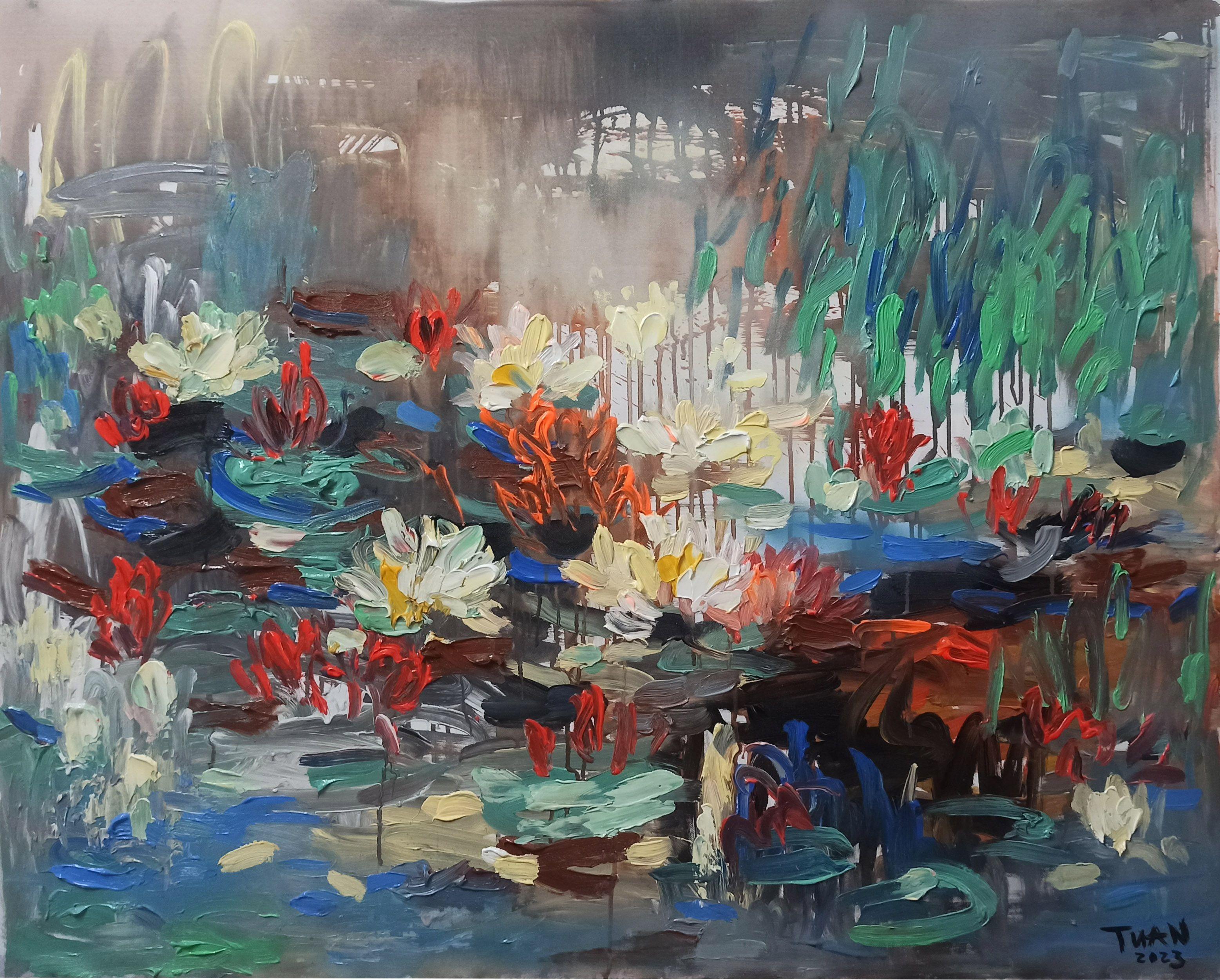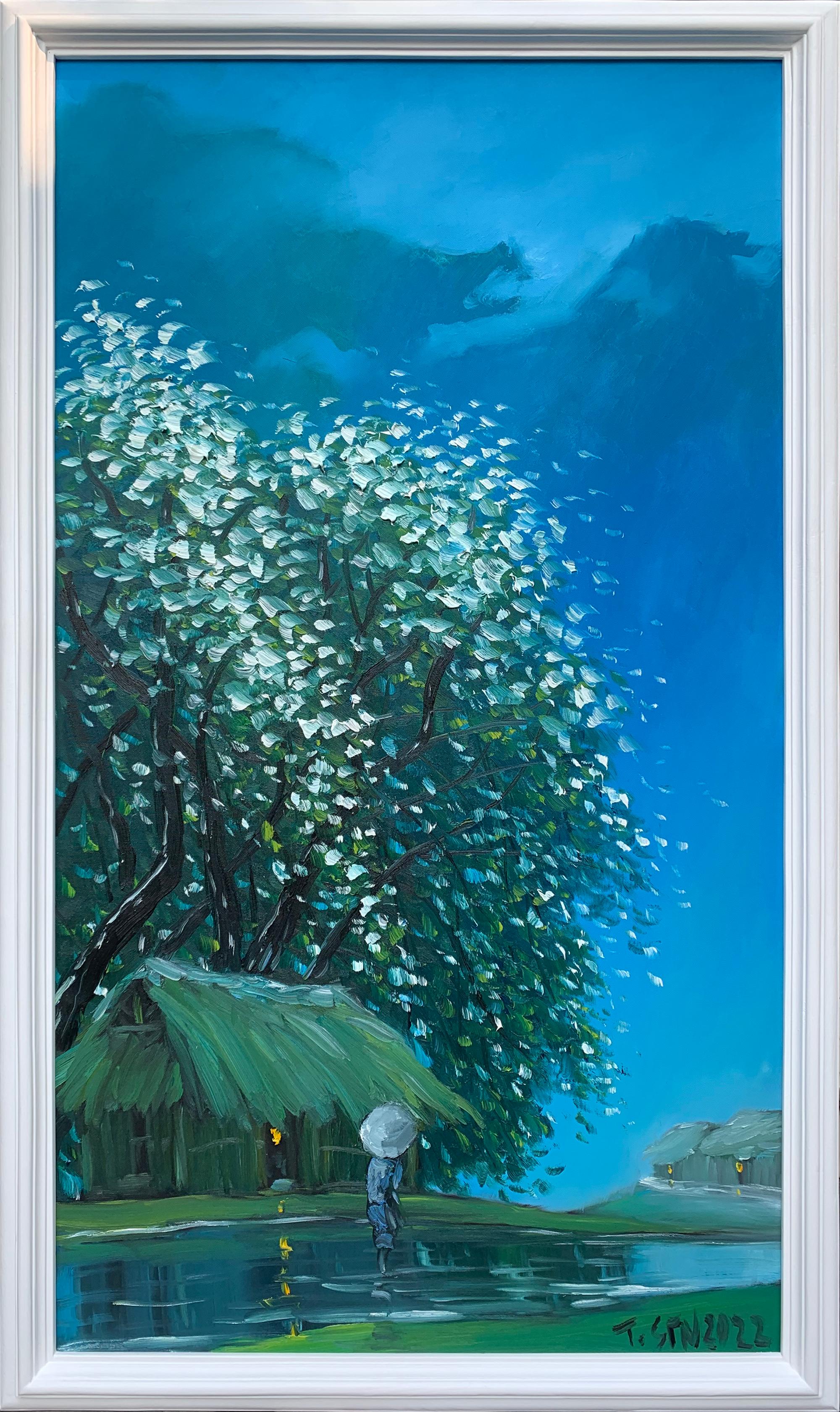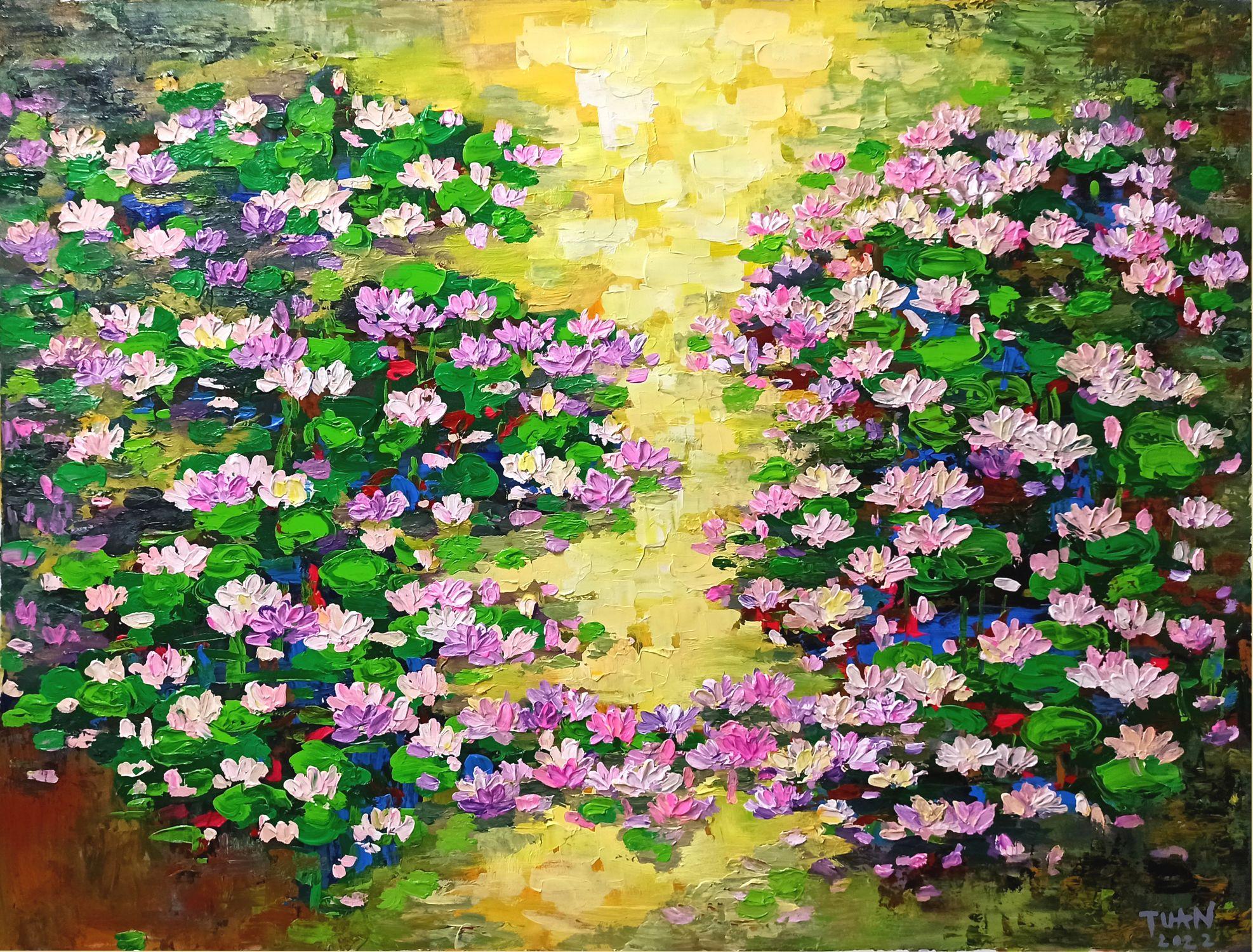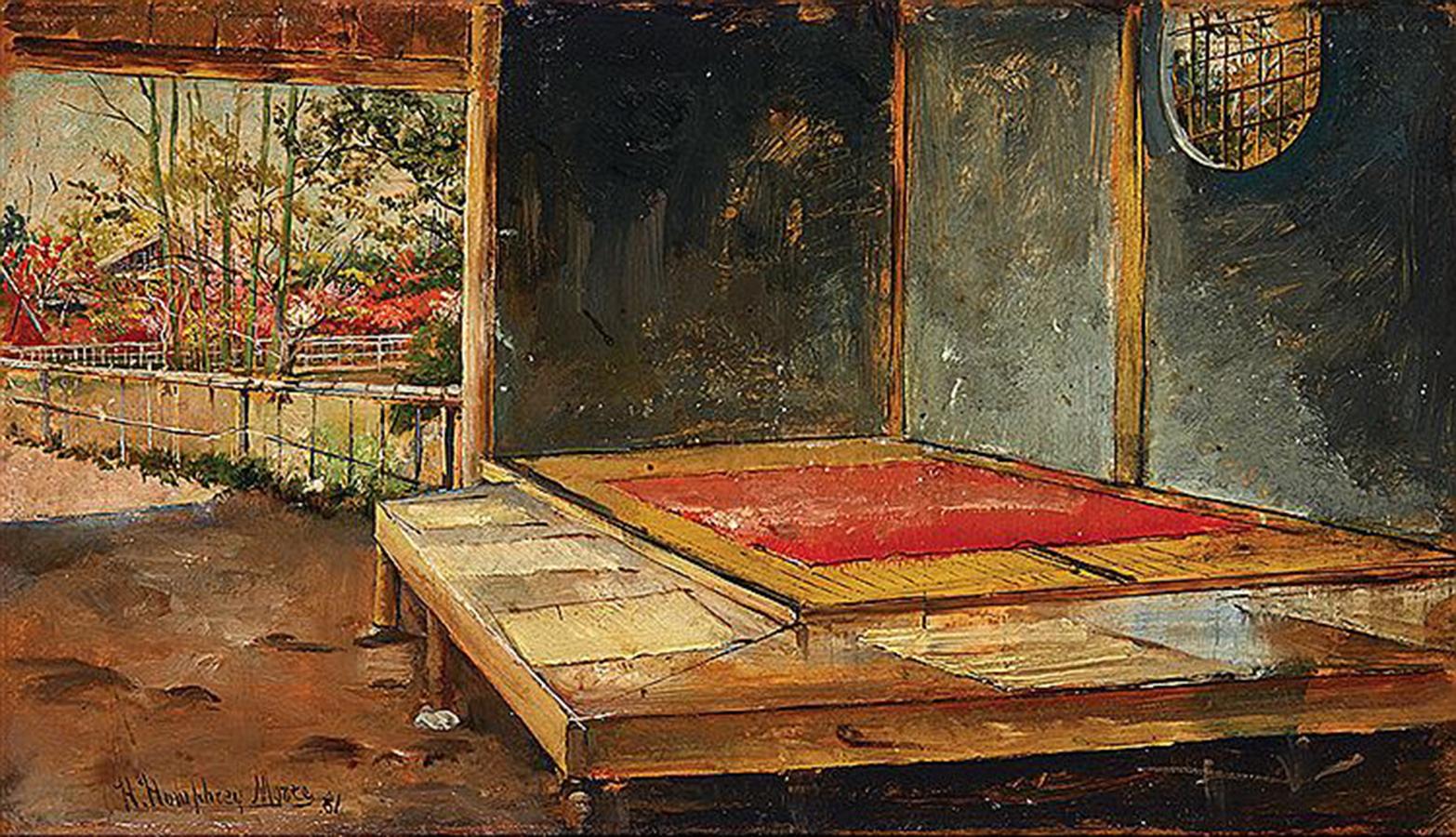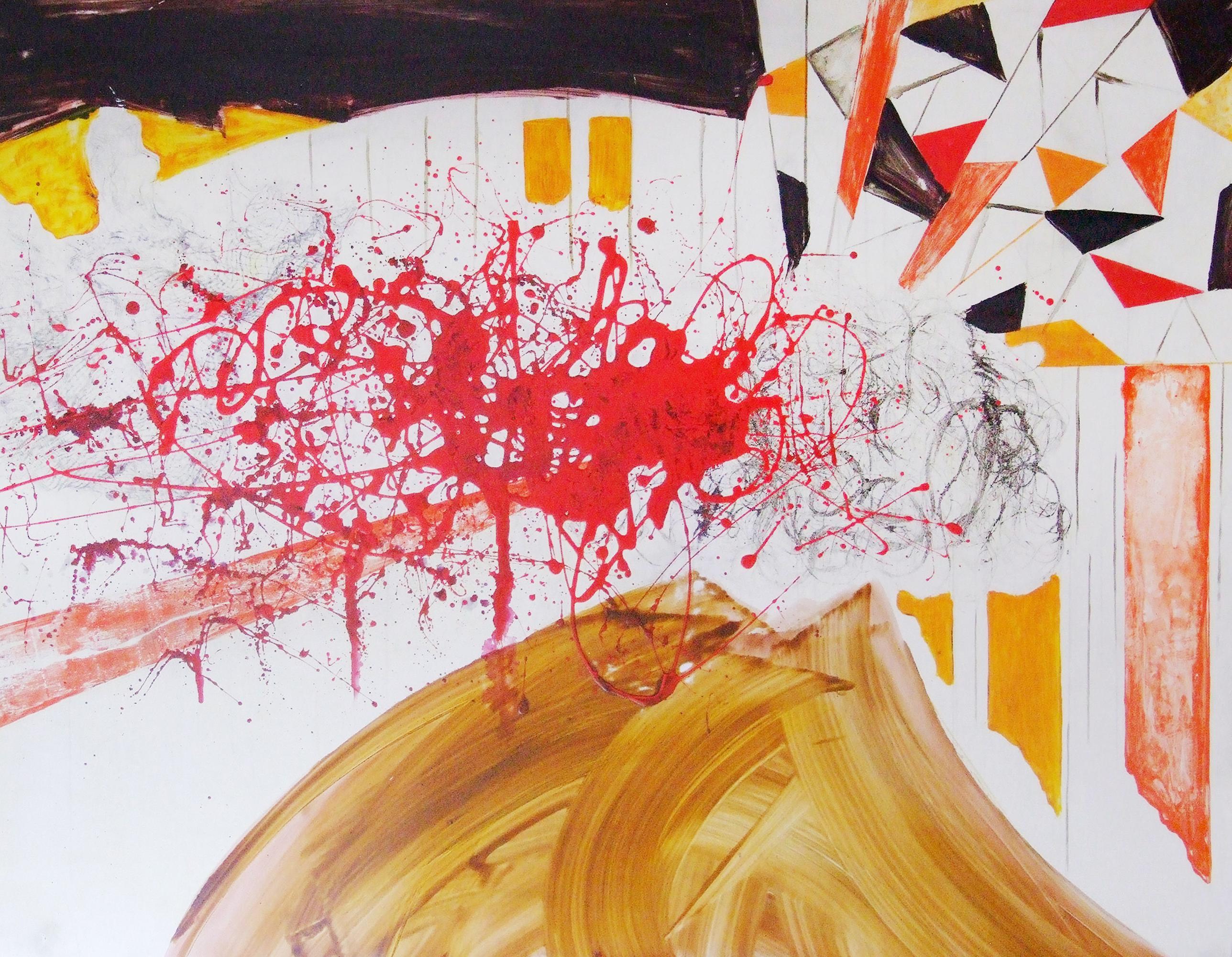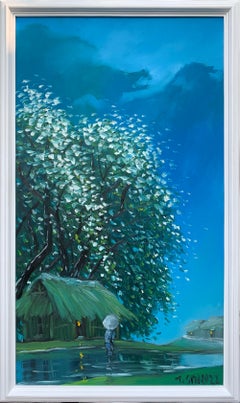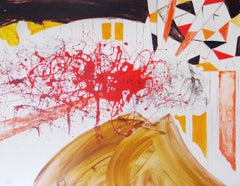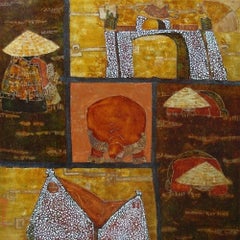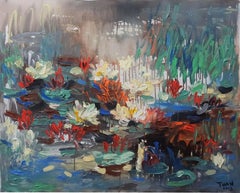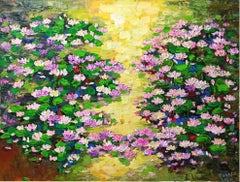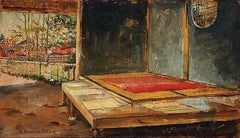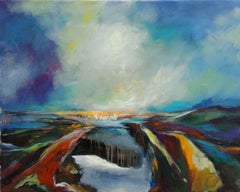Want more images or videos?
Request additional images or videos from the seller
1 of 9
Le Nhu Ha'Pagoda'2009
2009
$4,800
£3,644.75
€4,168.05
CA$6,706.30
A$7,458.87
CHF 3,894.79
MX$90,766.45
NOK 49,742.38
SEK 46,649.58
DKK 31,107.74
Shipping
Retrieving quote...The 1stDibs Promise:
Authenticity Guarantee,
Money-Back Guarantee,
24-Hour Cancellation
About the Item
'Pagoda' features immense detail and nuances between shadings of light and dark, sunlight and shadows. The majority of the colors in his works highlight a darker shade, which focuses the eye toward the more prominent brighter objects. Within the emphatic portion of his work, the subjects are composed of browns, blues, and greens. The unique perspective leads one into the subtle and mysterious depths of each painting, drawing upon the artist's spirituality.
- Creator:Le Nhu Ha (1945)
- Creation Year:2009
- Dimensions:Height: 50 in (127 cm)Width: 58 in (147.32 cm)
- Medium:
- Movement & Style:
- Period:
- Condition:
- Gallery Location:Rye, NY
- Reference Number:1stDibs: LU425312424762
Le Nhu Ha
Le Nhu Ha is an experienced and exquisite artist. Ha was born in 1945 in Hanoi, Vietnam, and graduated from the University of Applied Fine Arts in Hanoi. He is a member of the Vietnam Fine Arts Association and Hanoi Fine Arts Association. He has had group exhibitions in Hanoi, Singapore, Hong Kong and Europe.
About the Seller
5.0
Recognized Seller
These prestigious sellers are industry leaders and represent the highest echelon for item quality and design.
Established in 2007
1stDibs seller since 2016
56 sales on 1stDibs
Typical response time: 2 hours
- ShippingRetrieving quote...Shipping from: Rye, NY
- Return Policy
Authenticity Guarantee
In the unlikely event there’s an issue with an item’s authenticity, contact us within 1 year for a full refund. DetailsMoney-Back Guarantee
If your item is not as described, is damaged in transit, or does not arrive, contact us within 7 days for a full refund. Details24-Hour Cancellation
You have a 24-hour grace period in which to reconsider your purchase, with no questions asked.Vetted Professional Sellers
Our world-class sellers must adhere to strict standards for service and quality, maintaining the integrity of our listings.Price-Match Guarantee
If you find that a seller listed the same item for a lower price elsewhere, we’ll match it.Trusted Global Delivery
Our best-in-class carrier network provides specialized shipping options worldwide, including custom delivery.More From This Seller
View All'Enter Pagoda'
By Le Nhu Ha
Located in Rye, NY
‘Enter Pagoda’ is a large figurative oil on canvas exterior painting created by Vietnamese artist Le Nhu Ha in 2011. Featuring a beautifully contrasting palette made of black, red, g...
Category
21st Century and Contemporary Contemporary Figurative Paintings
Materials
Canvas, Oil
White Night
By Le Thanh Son
Located in Rye, NY
Le Thanh Son was born in Hanoi in 1962 and graduated from the Hanoi College of Drama and Cinematography in 1986. Le Thanh Son fills his canvases with clear, bright colors and is well...
Category
2010s Contemporary Landscape Paintings
Materials
Canvas, Oil
Price Upon Request
Composition
By Nguyen Xuan Anh
Located in Rye, NY
Mixed Media on Aluminium
Category
21st Century and Contemporary Contemporary Landscape Paintings
Materials
Metal
Price Upon Request
Highland Town
By Tran Dinh Khuong
Located in Rye, NY
Tran dinh Khuong is a contemporary artist inspired by the Vietnamese countryside. He paints using traditional lacquer on wood creating bold modern compositions in vivid colors of r...
Category
2010s Contemporary Landscape Paintings
Materials
Wood, Lacquer
Price Upon Request
Autumn
By Le Thanh Son
Located in Rye, NY
Le Thanh Son was born in Hanoi in 1962 and graduated from the Hanoi College of Drama and Cinematography in 1986. Le Thanh Son fills his canvases with clear, bright colors and is well...
Category
2010s Contemporary Landscape Paintings
Materials
Canvas, Oil
Price Upon Request
Early Morning
By Duong Viet Nam
Located in Rye, NY
Duong Viet Nam used acrylic on canvas and watercolor on “do” paper. His use of bright vivid colors are eye-catching and his long brush strokes emphasizes the beauty of the scenery in...
Category
2010s Impressionist Landscape Paintings
Materials
Acrylic
Price Upon Request
You May Also Like
Heavenly light, Painting, Acrylic on Canvas
Located in Yardley, PA
The view is reminiscent of Monet's garden in Giverny in late summer. Perspective leads the viewer into the depths of the landscape where light forms the focal point of the compositio...
Category
2010s Contemporary Paintings
Materials
Acrylic
Morning, Painting, Acrylic on Canvas
Located in Yardley, PA
Along with the lotus, the water lily is considered the most beautiful flower in the aquatic world. Water lilies have many shapes, many colors, and a pure fragrance that flies far awa...
Category
2010s Impressionist Paintings
Materials
Acrylic
Interior of a Japanese House
By Harry Humphrey Moore
Located in New York, NY
Harry Humphrey Moore led a cosmopolitan lifestyle, dividing his time between Europe, New York City, and California. This globe-trotting painter was also active in Morocco, and most importantly, he was among the first generation of American artists to live and work in Japan, where he depicted temples, tombs, gardens, merchants, children, and Geisha girls. Praised by fellow painters such as Thomas Eakins, John Singer Sargent, and Jean-Léon Gérôme, Moore’s fame was attributed to his exotic subject matter, as well as to the “brilliant coloring, delicate brush work [sic] and the always present depth of feeling” that characterized his work (Eugene A. Hajdel, Harry H. Moore, American 19th Century: Collection of Information on Harry Humphrey Moore, 19th Century Artist, Based on His Scrap Book and Other Data [Jersey City, New Jersey: privately published, 1950], p. 8).
Born in New York City, Moore was the son of Captain George Humphrey, an affluent shipbuilder, and a descendant of the English painter, Ozias Humphrey (1742–1810). He became deaf at age three, and later went to special schools where he learned lip-reading and sign language. After developing an interest in art as a young boy, Moore studied painting with the portraitist Samuel Waugh in Philadelphia, where he met and became friendly with Eakins. He also received instruction from the painter Louis Bail in New Haven, Connecticut. In 1864, Moore attended classes at the Mark Hopkins Institute in San Francisco, and until 1907, he would visit the “City by the Bay” regularly.
In 1865, Moore went to Europe, spending time in Munich before traveling to Paris, where, in October 1866, he resumed his formal training in Gérôme’s atelier, drawing inspiration from his teacher’s emphasis on authentic detail and his taste for picturesque genre subjects. There, Moore worked alongside Eakins, who had mastered sign language in order to communicate with his friend. In March 1867, Moore enrolled at the prestigious École des Beaux-Arts, honing his drawing skills under the tutelage of Adolphe Yvon, among other leading French painters.
In December 1869, Moore traveled around Spain with Eakins and the Philadelphia engraver, William Sartain. In 1870, he went to Madrid, where he met the Spanish painters Mariano Fortuny and Martin Rico y Ortega. When Eakins and Sartain returned to Paris, Moore remained in Spain, painting depictions of Moorish life in cities such as Segovia and Granada and fraternizing with upper-crust society. In 1872, he married Isabella de Cistue, the well-connected daughter of Colonel Cistue of Saragossa, who was related to the Queen of Spain. For the next two-and-a-half years, the couple lived in Morocco, where Moore painted portraits, interiors, and streetscapes, often accompanied by an armed guard (courtesy of the Grand Sharif) when painting outdoors. (For this aspect of Moore’s oeuvre, see Gerald M. Ackerman, American Orientalists [Courbevoie, France: ACR Édition, 1994], pp. 135–39.) In 1873, he went to Rome, spending two years studying with Fortuny, whose lively technique, bright palette, and penchant for small-format genre scenes made a lasting impression on him. By this point in his career, Moore had emerged as a “rapid workman” who could “finish a picture of given size and containing a given subject quicker than most painters whose style is more simple and less exacting” (New York Times, as quoted in Hajdel, p. 23).
In 1874, Moore settled in New York City, maintaining a studio on East 14th Street, where he would remain until 1880. During these years, he participated intermittently in the annuals of the National Academy of Design in New York and the Pennsylvania Academy of the Fine Arts in Philadelphia, exhibiting Moorish subjects and views of Spain. A well-known figure in Bay Area art circles, Moore had a one-man show at the Snow & May Gallery in San Francisco in 1877, and a solo exhibition at the Bohemian Club, also in San Francisco, in 1880. Indeed, Moore fraternized with many members of the city’s cultural elite, including Katherine Birdsall Johnson (1834–1893), a philanthropist and art collector who owned The Captive (current location unknown), one of his Orientalist subjects. (Johnson’s ownership of The Captive was reported in L. K., “A Popular Paris Artist,” New York Times, July 23, 1893.) According to one contemporary account, Johnson invited Moore and his wife to accompany her on a trip to Japan in 1880 and they readily accepted. (For Johnson’s connection to Moore’s visit to Japan, see Emma Willard and Her Pupils; or, Fifty Years of Troy Female Seminary [New York: Mrs. Russell Sage, 1898]. Johnson’s bond with the Moores was obviously strong, evidenced by the fact that she left them $25,000.00 in her will, which was published in the San Francisco Call on December 10, 1893.) That Moore would be receptive to making the arduous voyage across the Pacific is understandable in view of his penchant for foreign motifs. Having opened its doors to trade with the West in 1854, and in the wake of Japan’s presence at the Philadelphia Centennial Exposition of 1876, American artists were becoming increasingly fascinated by what one commentator referred to as that “ideal dreamland of the poet” (L. K., “A Popular Paris Artist”).
Moore, who was in Japan during 1880–81, became one of the first American artists to travel to the “land of the rising sun,” preceded only by the illustrator, William Heime, who went there in 1851 in conjunction with the Japanese expedition of Commodore Matthew C. Perry; Edward Kern, a topographical artist and explorer who mapped the Japanese coast in 1855; and the Boston landscapist, Winckleworth Allan Gay, a resident of Japan from 1877 to 1880. More specifically, as William H. Gerdts has pointed out, Moore was the “first American painter to seriously address the appearance and mores of the Japanese people” (William H. Gerdts, American Artists in Japan, 1859–1925, exhib. cat. [New York: Hollis Taggart Galleries, 1996], p. 5).
During his sojourn in Nippon (which means, “The Land of the Rising Sun”), Moore spent time in locales such as Tokyo, Yokohama, Kyoto, Nikko, and Osaka, carefully observing the local citizenry, their manners and mode of dress, and the country’s distinctive architecture. Working on easily portable panels, he created about sixty scenes of daily life, among them this depiction of an interior of a dwelling. The location of the view is unknown, but the presence of a rustic rail fence demarcating a yard bordering a distant house flanked by tall trees, shrubs and some blossoming fruit trees, suggests that the work likely portrays a building in a city suburb or a small village.
In his book, Japanese Homes and Their Surroundings, Edward S. Morse (an American zoologist, orientalist, and “japanophile” who taught at Tokyo Imperial University from 1877 to 1879, and visited Japan again in 1891 and 1882) noted the “openness and accessibility of the Japanese house...
Category
Late 19th Century Interior Paintings
Materials
Oil, Wood Panel
Structure summary, Painting, Acrylic on Canvas
Located in Yardley, PA
The original painting is a reflection of the natural landscape through an abstract perspective, the interweaving of lines and colors creates a vivid scene, my inspiration comes from ...
Category
21st Century and Contemporary Paintings
Materials
Acrylic
Chinese Contemporary Art by Jia Yuan-Hua - Time Travel
By Jia Yuan-Hua
Located in Paris, IDF
Acrylic on canvas
In my dream, I saw the old city gate from sixty years ago. It was tall and majestic, carrying the vicissitudes of history, and looked particularly beautiful again...
Category
2010s Contemporary Figurative Paintings
Materials
Acrylic, Canvas
$2,720 Sale Price
20% Off
Watercolor Impressions of Chinese Architecture 11, Original Painting
Located in San Francisco, CA
Artist Comments
Artist Siyuan Ma exhibits the Shanhua Temple, located inside the ancient city of Datong in Shanxi Province–a key cultural heritage site under state-level pr...
Category
21st Century and Contemporary Impressionist Interior Drawings and Waterc...
Materials
Watercolor
